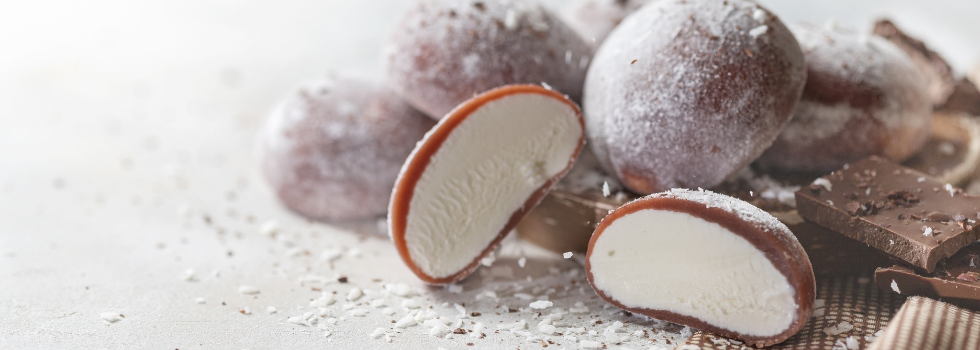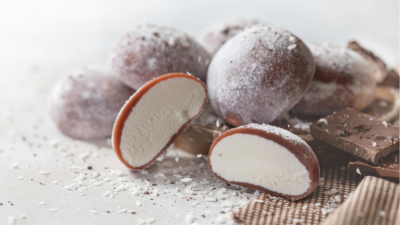Promotional Features
Let’s talk textures: Ingredion sees mochi texture as a key to elevating eating experiences
The textural experience of consumption
Innovative food textures add dimension to the entire eating experience. Food textures is one of the first impressions we have when we eat something. This makes it an extremely important factor to consider when we evaluate innovations with food products. More than two-thirds of Gen Z consumers equate interesting food textures with increased enjoyment and satisfaction, and over 60% of the same audience factor food texture descriptions into their buying decisions.1
Why mochi texture
Mochi texture has long been a mainstay in the Japanese bakery industry. With its distinctive mouthfeel of softness, stickiness and elasticity, it has gained great popularity with consumers and become a culinary buzzword in the food industry. This is evident from the number of new product launches with mochi texture elements. From 2016 to 2020, there are a total of 947 mochi product launches in Asia-Pacific, a 16% year-on-year increase. We also see 2,242 of new product launches with chewiness as its key texture attribute.2
The stretchy, chewy, and soft texture elements of mochi have tremendous potential to be applied to a wide variety of food products. This potential only increases when you consider that these elements can be applied together or separately to enhance food texture.
Textural possibilities and applications
There are a number of popular and widely consumed food products that can benefit from the application of mochi texture into their formulations. Mochi breads can achieve a more prolonged chew texture. Dumplings can have an enhanced freeze-thaw stability, plus attain a unique chewiness. Noodles, a mealtime staple for many in Asia-Pacific, can maintain elasticity through the process of cooking. As for desserts, donuts can have that added touch of springiness that consumers find desirable, and the melting rate of ice-cream can be decreased while also creating a more memorable and satisfying mouthfeel.
A number of challenges faced by food manufacturers can also be addressed with mochi textural application. For example, chewy breads that may normally lose their tantalising bite within two to three days, can have their chewy texture extended for up to five days, all while maintaining their original dome shape. The skin of frozen dumplings can retain a chewier bite after having undergone the process of thawing and then cooking, whether in soup, pan-fried or microwaved.
N-DULGE® 320
Ingredion is constantly working on products that can help manufacturers meet the increasingly complex textural needs from consumers. N-Dulge® 320 starch is the latest addition to our toolbox of mochi texturisers. It is tapioca-based starch that delivers both the distinctive mochi texture and improved functionality, while keeping food quality consistent. Its neutral taste profile is yet another benefit, as it means existing food flavours will not be affected. This robust solution is versatile enough for food applications such as mochi breads, dumplings, pizzas, ice cream, donuts and mochi confectionery. Prior to baking, it provides consistent dough cohesiveness, which is essential for the stretchy property of the mochi texture. During baking, it delivers process tolerance to shear, heat and various cooking conditions, as well as good volume expansion. After baking, it helps with shape retention and prevents post-bake shrinkage. It also works to extend the mochi texture throughout the product’s shelf life and slows down the process of food turning stale. Chilled and frozen foods can also achieve better texture quality and stability.
Our selection of texturisers provides the flexibility to create a myriad of mochi-based textural options that will cater to changing consumer demands by elevating their eating experience, while addressing the challenges faced by food manufacturers.
1) Innova Trends Survey 2019
2) Innova Market Insights 2021






